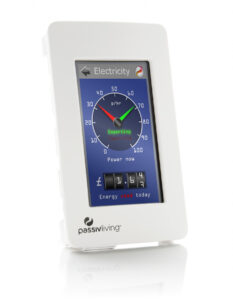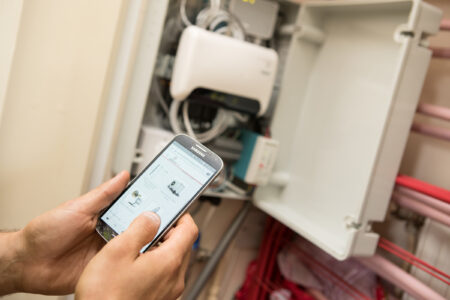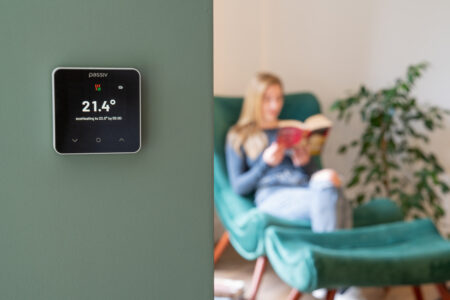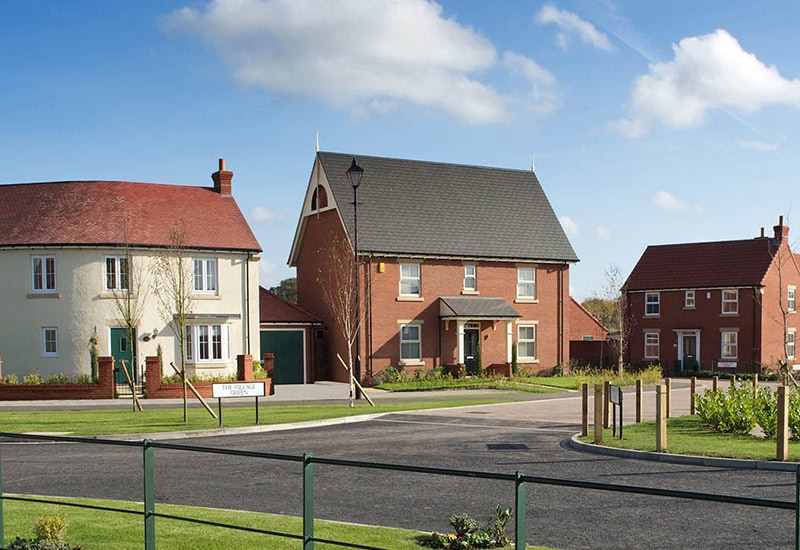The launch of the Passiv Smart Thermostat is a significant moment in Passiv UK’s history. The company was founded in 2009 with a vision of making smart solutions for homes by applying advances in computing and communications to services that were still rooted in a time when the internet didn’t exist.
Our first product was a connected home energy management system. We used patented mathematical techniques to improve home heating system operation and transformed the consumer experience with a user-friendly interface and mobile app. These enabled simple control from anywhere, taking away the confusion that many experienced when trying to programme their heating system. The technology is commonplace now, but at the time it was groundbreaking. Our home energy management system was recognised as one of the top 6 hottest products at the Consumer Electronics Show in Las Vegas in 2010 as a game changer in how home services could be managed.

The PassivController from 2010
That product sold well, allowing customers to manage their heating and divert their solar generation into smart-plug connected appliances. In 2012, we started installing monitoring and control systems in over 1,000 homes for British Gas as part of the Customer Led Network Revolution project – the UK’s first major project looking at the load profiles of low-carbon technologies. This included capturing data on heat pump demand and performance. We could see an opportunity to improve heat pump operation and in 2013 we secured Government funding to develop our first heat pump controls with time-of-use tariff optimisation.
Heat pumps were well suited to our controls because the way that we learnt the thermal performance of the home and dynamically controlled the flow temperature of the heat pump led to significant improvements in their performance. We also took the guesswork out of calculating the rate of heat loss of a building in order to accurately calculate the heat input required to maintain the desired temperature.
Our subsequent deployments were typically funded by innovation projects that were looking at the impact of decarbonising heating in homes, particularly on power networks. That meant as well as figuring out how best to control heat pumps for the consumers, we also worked to understand the new demand that the electrification of heat would place on the wider power system and how these impacts might be mitigated. Very early on we were looking at things like Demand Side Response and time-of-use tariff optimisation services that would help reduce the cost of the UK’s transition to net-zero.

Passiv heat pump controls installed as part of the FREEDOM project in 2018
Over the last eight years we’ve deployed smart controls with a whole host of heating systems and other low-carbon assets in homes – you can read more about these projects in the Insights page of our website. We have also used our monitoring services to collect heat pump performance data from the Government’s Electrification of Heat programme and from Renewable Heat Incentive (RHI) funded installations, giving us one of the best heat pump performance data sets in the UK.
We learned some really important lessons through that work that we have applied to our new product – the Passiv Smart Thermostat. Firstly, consumer ease-of-use and confidence in the controls is essential. Everything becomes much harder without it. There’s no point being clever with your controls if the consumer doesn’t buy in to that journey. Secondly, it’s essential that the products are easy to install and where problems do arise, that these can be identified and rapidly resolved. Too often problems with installations and commissioning lead to chronic under performance. Finally, it’s important that the consumer can see the value being delivered by their new heating system. In too many cases heat pump deployments have led to dissatisfaction and bad press. The key to resolving this is empowering stakeholders through access to data and the presentation of that data in a coherent manner, be that to the consumer, installer, landlord or heat pump manufacturer. A good control solution is an opportunity to ensure that the risk of poor performance is removed.

The Passiv Smart Thermostat – the smart way to control your heat pump
So the Passiv Smart Thermostat is the outcome of over 10 years of work to understand heating in homes and how these systems interact with the people that sell, install, use and maintain them. We hope it will prove a major step forward in making low-carbon heating accessible and affordable for all.



